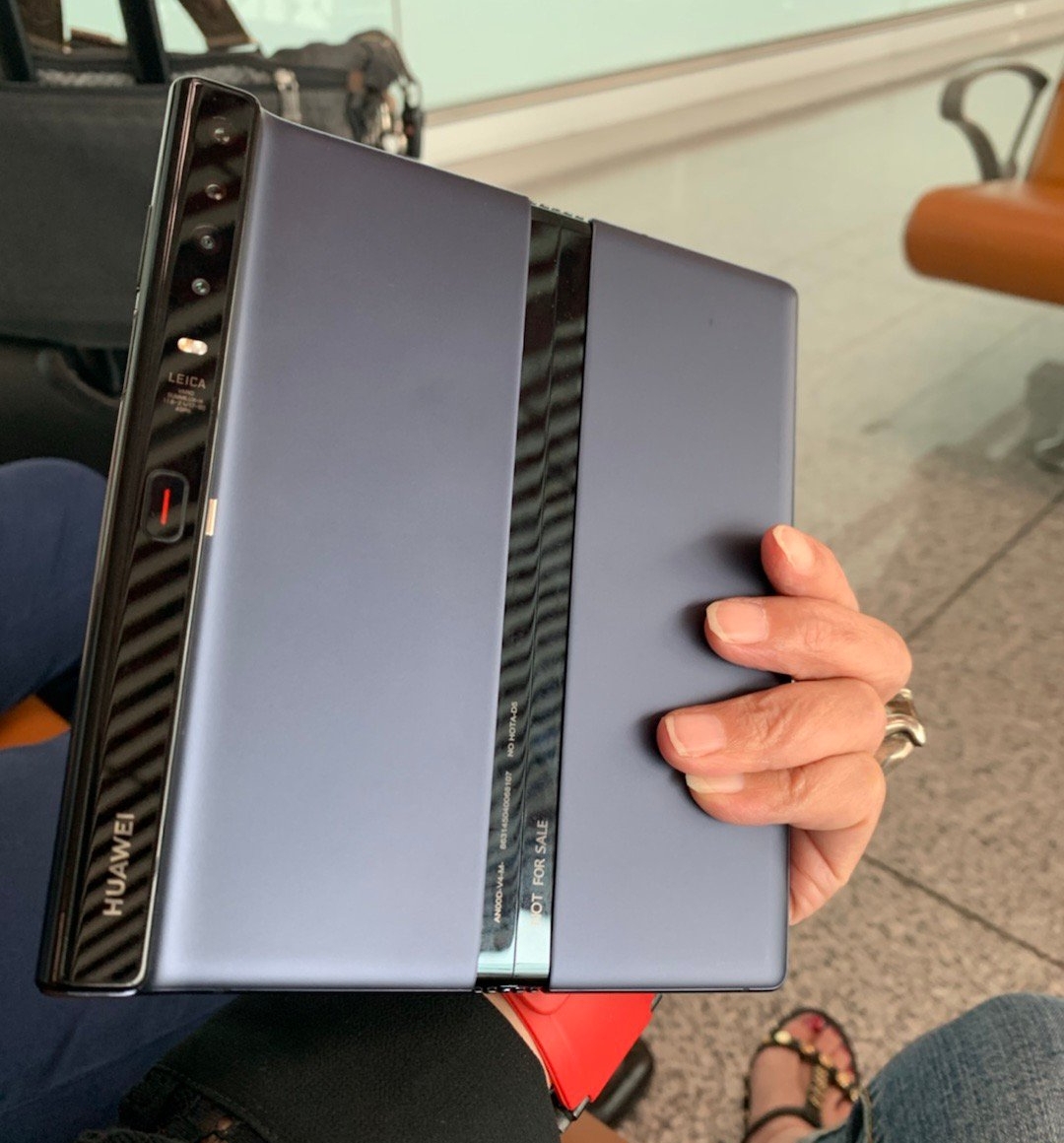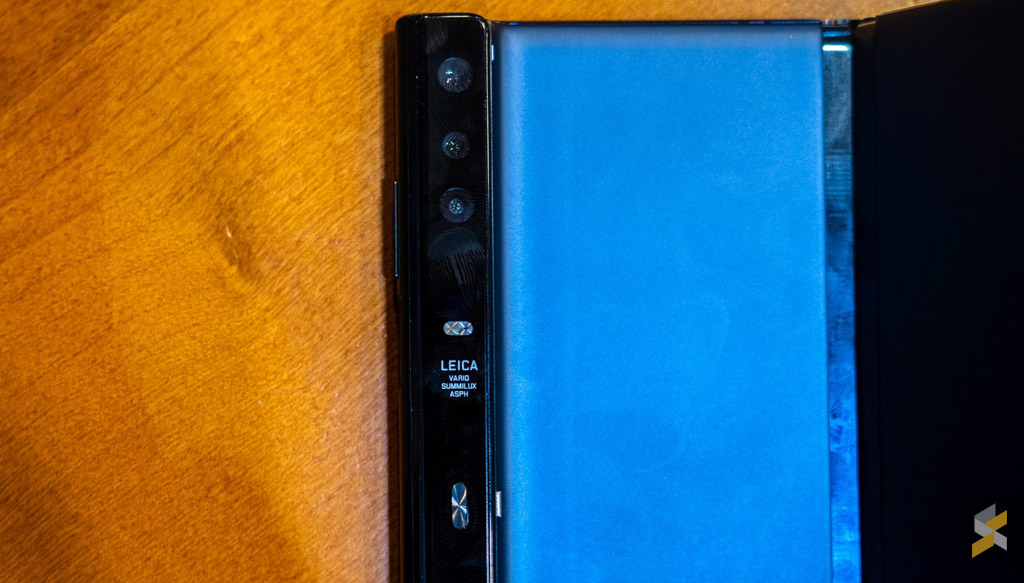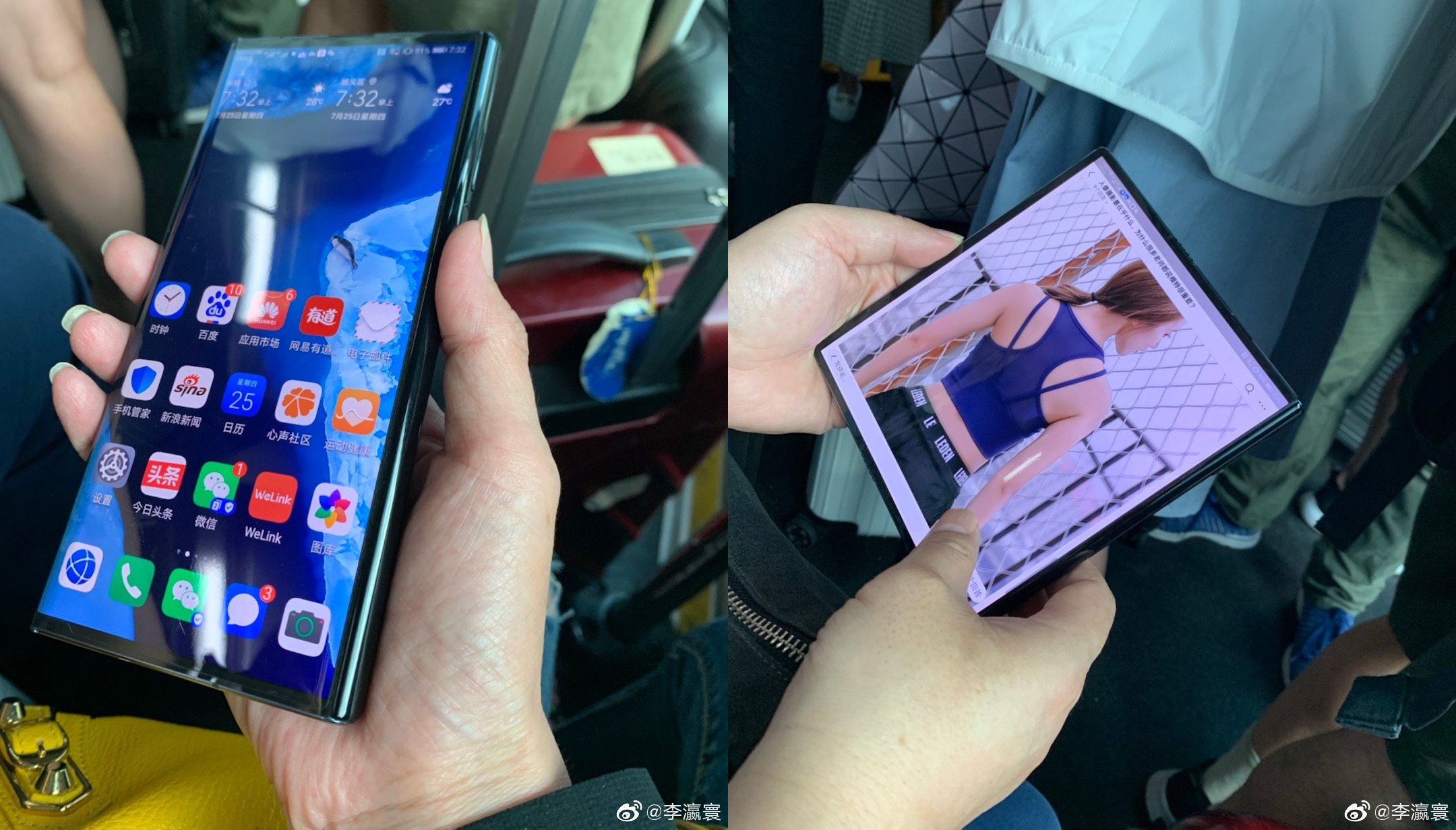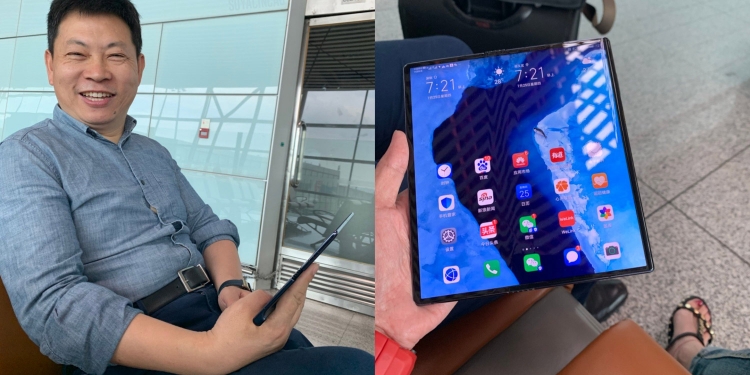The impressive Huawei Mate X that was unveiled earlier this year at Mobile World Congress 2019 is tentatively scheduled to go to market in September. Before the device reaches the hands of consumers, it appears that Huawei has made some design tweaks for its foldable device.
A Chinese journalist had bumped into Huawei CEO for Consumer Business Group, Richard Yu, at the airport and she managed to get a closer look at his Huawei Mate X. The form factor remains unchanged as it still folds outwards to transform the device into a tablet form factor.

If you look at the rear panel, you’ll notice that it comes with four cameras instead of three that are aligned vertically. The fourth camera could be a ToF sensor like the one that was included on the P30 Pro.
On top of that, the new Mate X also comes with a significantly larger button which you can press to unlock the rear display panel. The button also comes with a striking red line and the larger button should make it easier to open the Mate X. Below is the previous Mate X design that comes with a triple-camera setup and a smaller unlock button.

During her conversation with Richard Yu, she was told the Mate X’s availability was postponed to make way for further improvements. So far Huawei has not made any further announcements about the device and its direct competitor, the Galaxy Fold is now scheduled to launch in September.

To recap, the Huawei Mate X comes with a single 8″ 2480×2200 pixels resolution display which can be folded to create a dual-screen form factor with a 6.6″ (2480×1148) Full View display in front and a 6.38″ screen at the rear. It runs on a Kirin 980 processor along with Huawei’s Balong 5000 modem that supports 5G with download speed up to 4.6Gbps.
When it was announced in Barcelona, the device carried a price tag of 2,299 EUR (about RM10,551) and it comes with 8GB RAM and 512GB of storage. As a comparison, the Galaxy Fold is retailing for US$1,980 (about RM8,519) in the US.
If you haven’t seen it yet, you can check out our first impressions or watch our hands-on video below:








